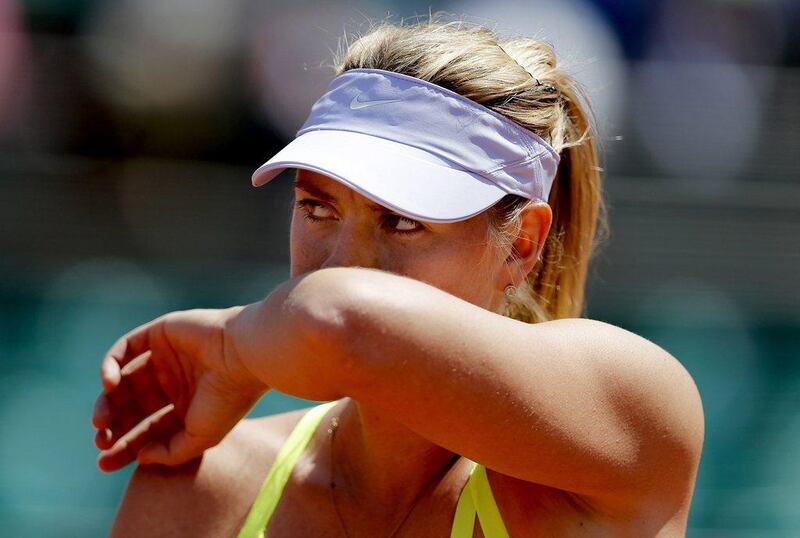Maria Sharapova hit back Friday at suggestions she received five separate warnings about changes to tennis' anti-doping rules which ultimately led to her testing positive for a banned drug.
A defiant Sharapova defended herself in a post on her Facebook page, saying that she received one clear notice in December titled “Main Changes to the Tennis Anti-Doping Programme for 2016”.
“I should have paid more attention to it. But the other ‘communications’? They were buried in newsletters, websites, or handouts,” the Russian star said.
Former world No 1 Sharapova announced Monday that she failed a drug test at the Australian Open in January.
Sharapova tested positive for meldonium, which was added to the World Anti-Doping Agency’s banned list on January 1.
The 28-year-old Sharapova also insisted Friday that she has never faked an injury to try and foil the drug testers.
Read more: Osman Samiuddin – Maria Sharapova, Lance Armstrong and how to reconsider how we think of doping
“I won’t pretend to be injured so I can hide the truth about my testing,” said Sharapova, vowing to set the record straight over her supposed multiple warnings.
“I am determined to fight back,” she said. “No excuses, but it’s wrong to say I was warned five times.”
The Times of London on Wednesday reported that Sharapova had received five separate notifications that meldonium was to be banned.
The newspaper said three correspondences had been sent by the International Tennis Federation [ITF] and two from the Women’s Tennis Association (WTA).
WADA had also issued communications in September that the substance was to be added to the banned list from January 1.
The Times said all of the warnings from the ITF and WTA arrived in December, with the final reminder landing on December 29.
Sharapova said on December 18 she received an email titled “Player News” and mixed in with the rankings, tournament news, bulletins, and birthday wishes was the notification of changes to the anti-doping rules.
“In other words, in order to be aware of this ‘warning’, you had to open an email with a subject line having nothing to do with anti-doping, click on a webpage, enter a password, enter a username, hunt, click, hunt, click, hunt, click, scroll and read.
“I guess some in the media can call that a warning. I think most people would call it too hard to find.”
Sharapova said earlier this week that she used meldonium for the past decade to treat illnesses, a heart issue and a magnesium deficiency.
Sharapova also took issue with reports that the normal course of treatment with meldonium spanned four to six weeks.
“I didn’t take the medicine every day. I took it the way my doctor recommended I take it and I took it in the low doses recommended,” she wrote.
“I’m proud of how I have played the game. I have been honest and upfront.”
Sharapova said she is eager to have her hearing with ITF officials so she can give her side of the story.
“I look forward to the ITF hearing at which time they will receive my detailed medical records.”
She said she hopes to return to tennis but also admitted that because of the scandal her career may be in jeopardy.
“I hope I will be allowed to play again,” she said. “But no matter what, I want you, my fans, to know the truth and have the facts.”
Follow us on Twitter @NatSportUAE
Like us on Facebook at facebook.com/TheNationalSport





